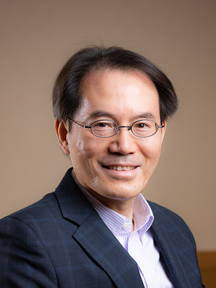
CHEN Guoping
Group Leader, Tissue Regeneration Materials Group, Research Center for Macromolecules and Biomaterials, National Institute for Materials Science
Research field
functional biomaterials, polymer chemistry, biomimetic materials
Research outline
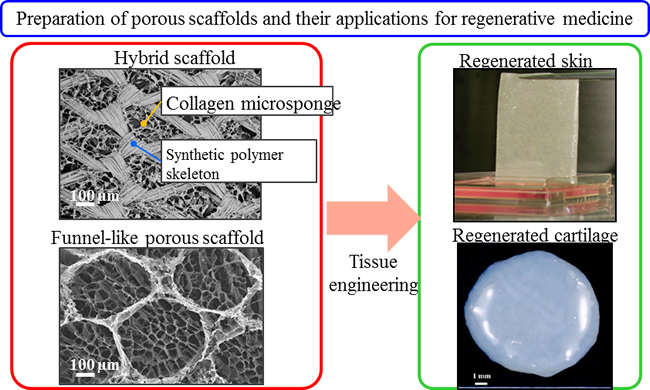
Research on multi-functional scaffolds and biomaterials for tissue regeneration and cancer therapy is carried out. Porous and hybrid scaffolds of biodegradable polymers, biomimetic matrices, nano- and micro-patterned functional biomolecules and biofunctional nanoparticles are designed and prepared for biomedical applications.
Research Interests
porous scaffold, extracellular matrices, regenerative medicine, cartilage regeneration, micropatterns
Assigned university/courses
University of Tsukuba Graduate School of Pure and Applied Sciences
PhD : Materials Science and Engineering
MSc : Materials Science
Message to prospective students
Human body is made up of several tens of trillion cells that play a pivotal role in regeneration of injured tissue and the onset and progression of diseases such as cancer. Biomaterials have been demonstrated effective in controlling the functions of stem cells and cancer cells for tissue regeneration and cancer therapy. Students interested in such research are welcome.
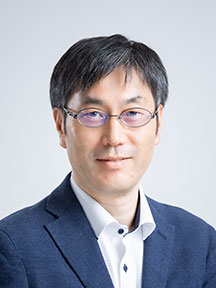
TAGUCHI Tetsushi
Group Leader, Polymeric Biomaterials Group, Research Center for Macromolecules and Biomaterials, National Institute for Materials Science
Research field
functional materials, biomedical polymer, gel, adhesive, biointerface
Research outline
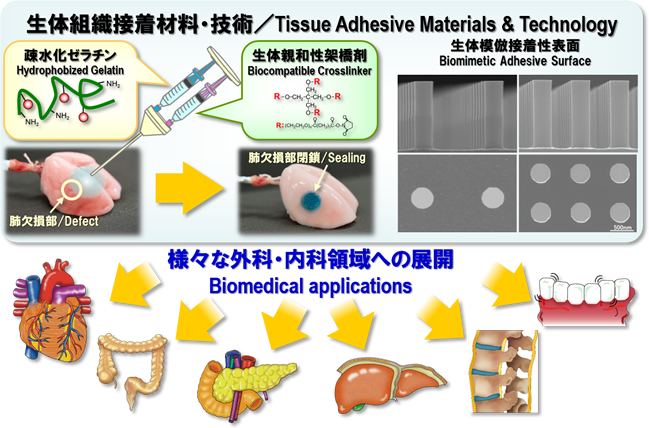
Our group focuses on the development of innovative polymeric biomaterials by controlling biological reactions at the interface between materials and biological components occurring from acute stage to chronic stage for medical treatment. The goal of our researches is to apply the innovative biomaterials for clinical fields in collaboration with medical/dental institutes.
Research Interests
gelatin, hydrophobic, surgical operation, bioabsorbable, adhesion
Assigned university/courses
University of Tsukuba Graduate School of Pure and Applied Sciences
PhD : Materials Science and Engineering
MSc : Materials Science
Message to prospective students
Let's proceed basic researches on biomedical materials together for the contribution of clinical applications.
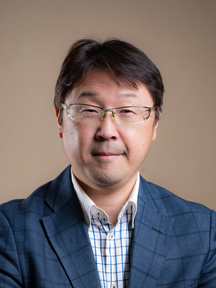
EBARA Mitsuhiro
Field Director, Biomaterials Field, Research Center for Macromolecules and Biomaterials, National Institute for Materials Science
Research field
polymer chemistry, medical devices
Research outline
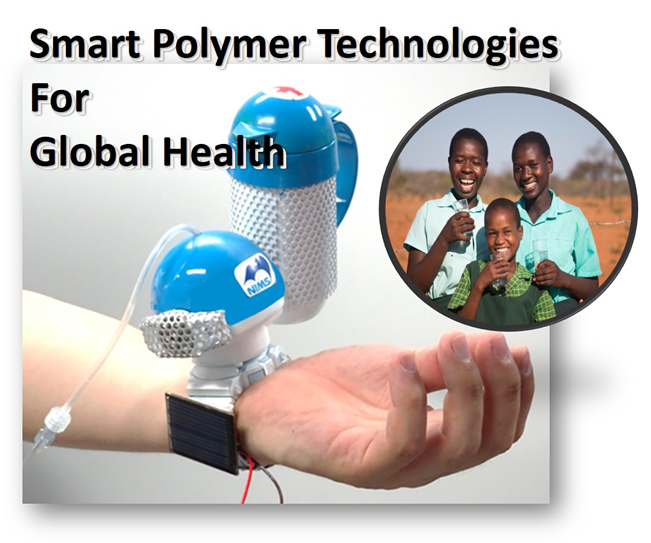
Our research group is interested in smart polymers that respond to small changes in external stimuli. These smart polymers are designed to act as an on-off switch for not only newest biomedical applications such as drug delivery technologies, but also public health in developing countries such as early diagnostics and hemodialysis treatments.
Research Interests
smart polymers, drug delivery system, cancer therapy
Assigned university/courses
University of Tsukuba Graduate School of Pure and Applied Sciences
PhD : Materials Science and Engineering
MSc : Materials Science
Message to prospective students
Nearly 1/2 of the world's population live on less than $2 a day. In the 21st century, one of the most important mission is to improve global health care. So, let's study together to develop not only newest medical technologies but also public health care technologies in developing countries.
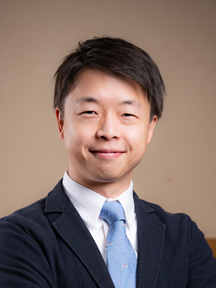
OKAMOTO Akihiro
Group Leader, Electrochemical Nano-Bio Group, Research Center for Macromolecules and Biomaterials, National Institute for Materials Science
Research field
bioelectrochemistry, electrode catalysts material, biochemistry, molecular biology
Research outline
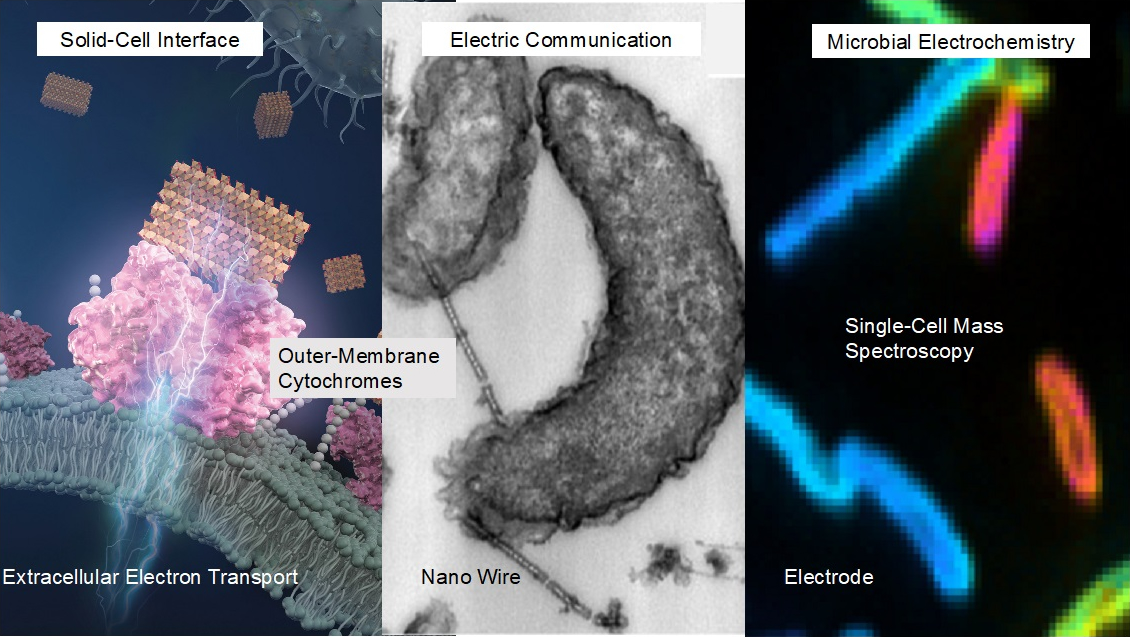
"Of the 1030 bacteria present on the earth, many of them have properties as "electrically-active bacteria (EAB)" that exchange electrons with solid materials. We do interdisciplinary basic research on the function and roll of EAB by electrochemistry, spectroscopy, and molecular biology toward a wide range of outlets, energy, medical, sensors, and underground biosphere.
Research Interests
extracellular electron transport, microbial fuel cell, microbiologically influenced iron corrosion
Assigned university/courses
Hokkaido University Graduate School of Chemical Sciences and Engineering
Materials Chemistry and Engineering Course
This professor is no longer accepting new students.
Message to prospective students
We are waiting for ambitious person who is willing to challenge the novel and interdisciplinary science into life energy by electricity, that mobilize the knowledge of physical chemistry, microbiology, and molecular biology. For instance, we study interfacial electron transport via cell-surface polynuclear metalloenzymes by electrochemistry, spectroscopy, and genetic engineering.
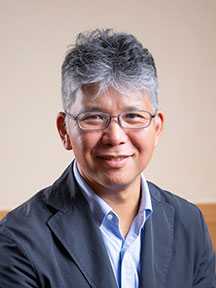
YAMAZAKI Tomohiko
Principal Researcher, Medical Soft Matter Group, Research Center for Macromolecules and Biomaterials, National Institute for Materials Science
Research field
protein engineering, genetic engineering, cell engineering, evolutionary engineering, nanobiotechnology
Research outline
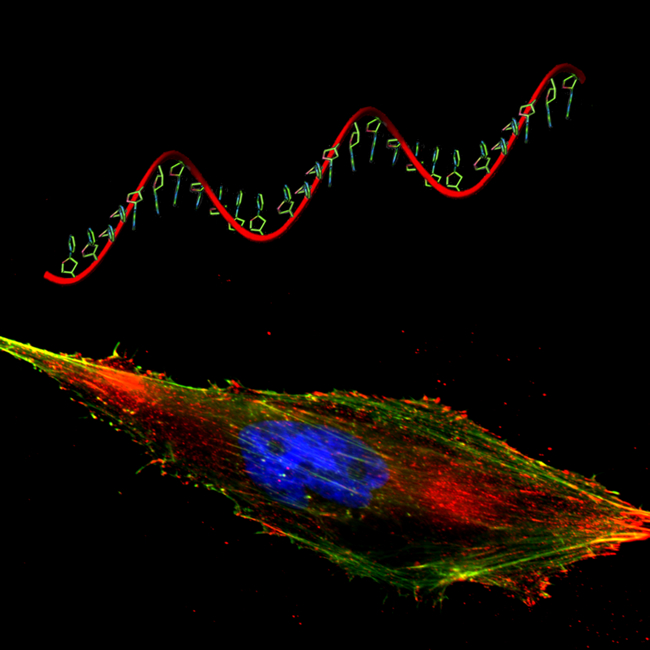
We are developing novel bio-nanomolecules such as oligonucleotide-, peptide-, and protein-based materials, with knowledge gained from the life sciences. We seek to utilize the novel bio-nanomolecules to diagnostic and therapy of cancer, infection and immunological disease.
・Immune response regulation by controlling the conformation of CpG oligodeoxynucleotide (ODN)
・Development of a vaccine adjuvant mimicking malarial parasites
Research Interests
biosensor, immune activator, therapeutic and diagnostic nanomaterial, molecular recognition element, molecular imprinting polymer
Assigned university/courses
Hokkaido University Graduate School of Life Science
Biosystems Science Course
Message to prospective students
In our research, integration of scientific knowledge and technique of various fields, such as molecular biology, cell biology, protein engineering, protein function analysis, and also a biomaterial, is indispensable. We offer a supportive environment for promoting your research. Anyone who is interested in our project, please contact us.
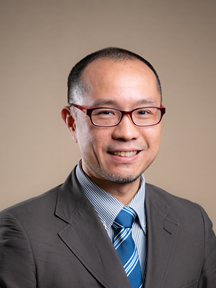
NAKANISHI Jun
Group Leader, Mechanobiology Group, Research Center for Macromolecules and Biomaterials, National Institute for Materials Science
Research field
bioanalysis, mechanobiology, nanobiotechnology, chemical biology
Research outline
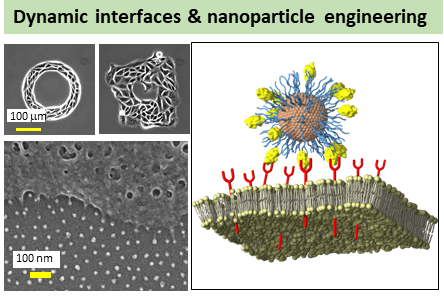
Development of new bioanalysis methods based on dynamic materials and precisely-designed interfaces. By using the new methodologies, we will understand biochemical regulation and mechanobiology in cell migration, stem cell differentiation, and cancer, and apply these knowledges to drug discovery, therapeutics and regenerative medicines.
Research Interests
nanoparticles, stimulus-responsive materials, cell mechanosensing, cell migration, stem cells
Assigned university/courses
Waseda University Graduate School of Advanced Science and Engineering
Department of Nanoscience and Nanoengineering
Message to prospective students
The development of new methodologies has made breakthrough in biological sciences. Our group develops bioanalysis methodologies based on new materials. Let's find unknown biological phenomena by creating unique materials!
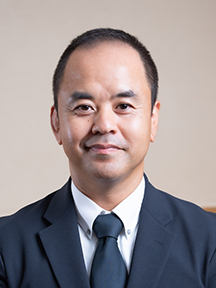
YOSHITOMI Toru
Principal Researcher, Tissue Regeneration Materials Group, Research Center for Macromolecules and Biomaterials, National Institute for Materials Science
Research field
biomaterials
Research outline
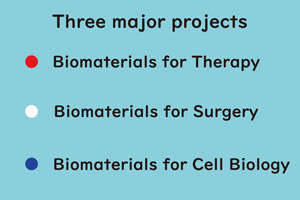
Based on the science of biomaterials, we are developing new medical materials and biomaterials for exploring life sciences.
Research Interests
medical materials, biomaterials for life science
Assigned university/courses
Institute of Science Tokyo School of Materials and Chemical Technology
Doctoral Program in Materials Science and Engineering
Message to prospective students
Let's create new biomaterials for future medical equipment and exploration of life science.

 NIMS researchers directory, SAMURAI
NIMS researchers directory, SAMURAI
 How to
How to  Send email
Send email